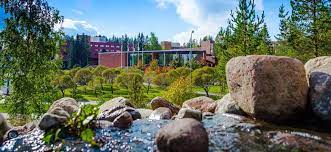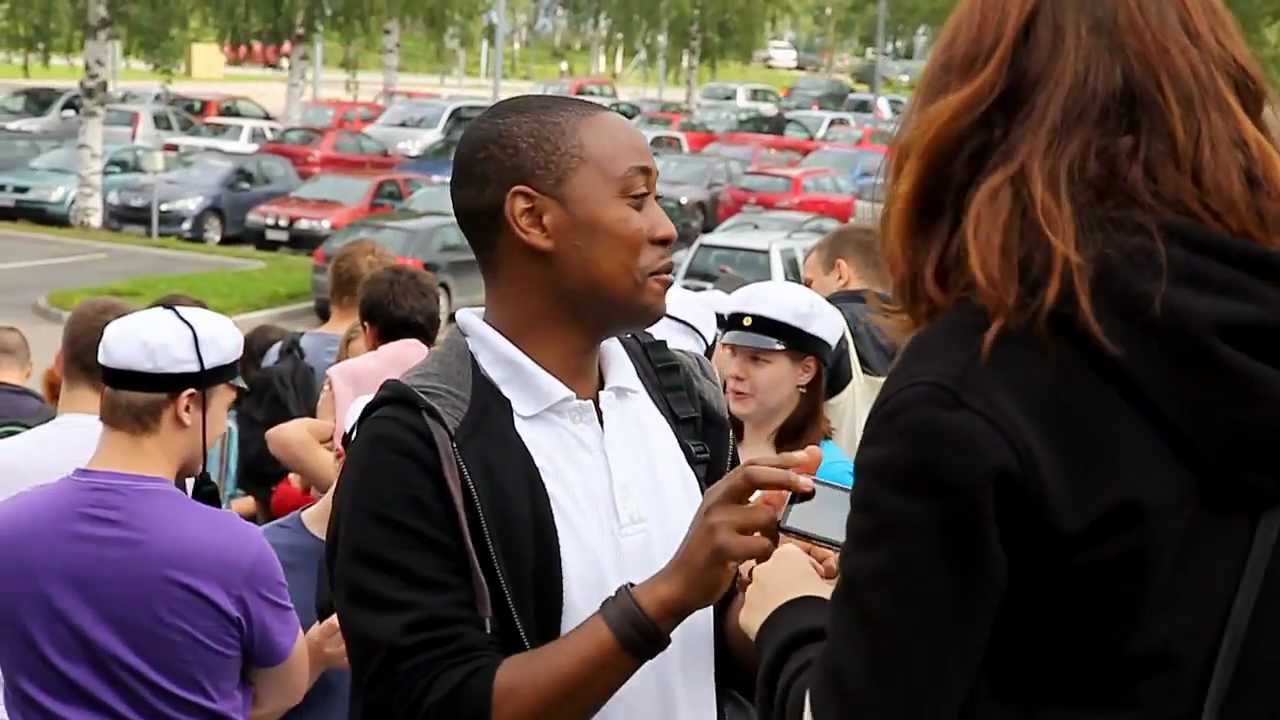UT University (Lappeenranta-Lahti University of Technology LUT) is a pioneering science university in Finland, bringing together the fields of science and business since 1969.
Our international community is composed of approximately 6,500 students and experts engaged in scientific research and academic education.
Clean energy, water and air are life-giving resources for which we at LUT University seek new solutions with our expertise in technology and business. We help society and businesses in their sustainable renewal.
LUT has a tradition of strong links with the business community. The Finnish business journal "Talouselämä" has ranked LUT as the best university in business technology cooperation in Finland. We promote business generated by scientific research. This is demonstrated by the university's own investment company Green Campus Innovations, which supports LUT's research-based start-up companies.
We aim to be a forerunner in education by securing international quality labels for our degree programmes as a sign of excellence in the teaching.
Our work supports our values: the courage to succeed, the passion for innovation through science, and the will to build well-being.


Business Type: Private
Institute Type:
Age Range: 19+
Gender: Mix
Curriculum:
Number of Students: 2000
Percentage of International students: 30%
Country: Finland
City: Lappeenranta,
International Airports: Helsinki
Accommodation: 500
Transport: 100
Food: 250
Courses: Principle of Management, Business Communication
| Course Name | Duration | Minimum Age | Level | Fees | Intake | More Details |
|---|---|---|---|---|---|---|
| Master in Software Engineering | 2 Years | 19+ | 7,8 | Euro 13500 | August 2022 | |
| Master in Mechanical Engineering | 2 Years | 19+ | 7,8 | Euro 13500 | August 2022 | |
| Master in Industrial Engineering and Management | 2 Years | 19+ | 7,8 | Euro 13500 | August 2022 | |
| Master in Environmental Technology | 2 Years | 19+ | 7,8 | Euro 13500 | August 2022 | |
| Master in Energy Technology | 2 Years | 19+ | 7,8 | Euro 13500 | August 2022 | |
| Masterin Electrical Engineering | 2 Years | 19+ | 7,8 | Euro 13500 | August 2022 | |
| Master in Computational Engineering | 2 Years | 19+ | 7,8 | Euro 13500 | August 2022 | |
| Master in Chemical Engineering | 2 Years | 19+ | 7,8 | Euro 13500 | August 2022 | |
| Bachelor in Technology and Engineering Science | 3 Years | 19+ | 4,5,6 | Euro 9000 | August 2022 | |
| Bachelor in Software and Systems Engineering | 3 Years | 19+ | 4,5,6 | Euro 9000 | August 2022 | |
| Bachelor in Mechanical Engineering | 3 Years | 19+ | 4,5,6 | Euro 9000 | August | |
| Bachelor in Industrial Engineering and Management | 3 Years | 19+ | 4,5,6 | Euro 9000 | August 2022 | |
| Bachelor in Energy Technology | 3 years | 19+ | 4,5,6 | Euro 9000 | August 2022 | |
| Bachelor in Electrical Engineering | 3 years | 19+ | 4,5,6 | Euro 9000 | August 2022 |
| Visa Name | Documents Needed | Visa Application Fees |
|---|
Time and time again, American students continually rank near the middle or bottom among industrialized nations when it comes to performance in math and science. The Program for International Student Assessment (PISA) which in conjunction with the Organization for Economic Cooperation and Development (OECD) routinely releases data which shows that Americans are seriously lagging behind in a number of educational performance assessments.
Despite calls for education reform and a continual lackluster performance on the international scale, not a lot is being done or changing within the educational system. Many private and public schools run on the same antiquated systems and schedules that were once conducive to an agrarian society. The mechanization and rigid assembly-line methods we use today are spitting out ill-prepared worker clones, rudderless adults and an uninformed populace.
But no amount of pontificating will change what we already know. The American education system needs to be completely revamped – from the first grade to the Ph.D. It’s going to take a lot more than a well-meaning celebrity project to do that…
Many people are familiar with the stereotype of the hard-working, rote memorization, myopic tunnel vision of Eastern Asian study and work ethics. Many of these countries, like China, Singapore, and Japan amongst others routinely rank in the number one spots in both math and science.
Some pundits point towards this model of exhaustive brain draining as something Americans should aspire to become. Work more! Study harder! Live less. The facts and figures don’t lie – these countries are outperforming us, but there might be a better and healthier way to go about this.
Finland is the answer – a country rich in intellectual and educational reform has initiated over the years a number of novel and simple changes that have completely revolutionized their educational system. They outrank the United States and are gaining on Eastern Asian countries.
No standardized testing
Staying in line with our print-minded sensibilities, standardized testing is the blanket way we test for subject comprehension. Filling in little bubbles on a scantron and answering pre-canned questions is somehow supposed to be a way to determine mastery or at least competence of a subject. What often happens is that students will learn to cram just to pass a test and teachers will be teaching with the sole purpose of students passing a test. Learning has been thrown out of the equation.
Finland has no standardized tests. Their only exception is something called the National Matriculation Exam, which is a voluntary test for students at the end of an upper-secondary school (equivalent to an American high school.) All children throughout Finland are graded on an individualized basis and grading system set by their teacher. Tracking overall progress is done by the Ministry of Education, which samples groups across different ranges of schools.
Accountability for teachers (not required)
A lot of the blame goes to the teachers and rightfully so sometimes. But in Finland, the bar is set so high for teachers, that there is often no reason to have a rigorous “grading” system for teachers. Pasi Sahlberg, director of the Finnish Ministry of Education and writer of Finnish Lessons: What Can the World Learn from Educational Change in Finland? Said that following about teachers’ accountability:
"There's no word for accountability in Finnish… Accountability is something that is left when responsibility has been subtracted."
— Pasi Sahlberg
All teachers are required to have a master’s degree before entering the profession. Teaching programs are the most rigorous and selective professional schools in the entire country. If a teacher isn’t performing well, it’s the individual principal's responsibility to do something about it.
The concept of the pupil-teacher dynamic that was once the master to apprentice cannot be distilled down to a few bureaucratic checks and standardized testing measures. It needs to be dealt with on an individual basis.
Cooperation not competition
While most Americans and other countries see the educational system as one big Darwinian competition, the Finns see it differently. Sahlberg quotes a line from a writer named Samuli Paronen which says that:
“Real winners do not compete.”
— Samuli Paronen
Ironically, this attitude has put them at the head of the international pack. Finland’s educational system doesn’t worry about artificial or arbitrary merit-based systems. There are no lists of top performing schools or teachers. It’s not an environment of competition – instead, cooperation is the norm.
Make the basics a priority
Many school systems are so concerned with increasing test scores and comprehension in math and science, they tend to forget what constitutes a happy, harmonious and healthy student and learning environment. Many years ago, the Finnish school system was in need of some serious reforms.
The program that Finland put together focused on returning back to the basics. It wasn’t about dominating with excellent marks or upping the ante. Instead, they looked to make the school environment a more equitable place.
Since the 1980s, Finnish educators have focused on making these basics a priority:
Beginning with the individual in a collective environment of equality is Finland’s way.
Starting school at an older age
Here the Finns again start by changing very minute details. Students start school when they are seven years old. They’re given free reign in the developing childhood years to not be chained to compulsory education. It’s simply just a way to let a kid be a kid.
There are only 9 years of compulsory school that Finnish children are required to attend. Everything past the ninth grade or at the age of 16 is optional.
Just from a psychological standpoint, this is a freeing ideal. Although it may anecdotal, many students really feel like they’re stuck in a prison. Finland alleviates this forced ideal and instead opts to prepare its children for the real world.
Providing professional options past a traditional college degree
The current pipeline for education in America is incredibly stagnant and immutable. Children are stuck in the K-12 circuit jumping from teacher to teacher. Each grade a preparation for the next, all ending in the grand culmination of college, which then prepares you for the next grand thing on the conveyor belt. Many students don’t need to go to college and get a worthless degree or flounder about trying to find purpose and incur massive debt.
Finland solves this dilemma by offering options that are equally advantageous for the student continuing their education. There is a lesser focused dichotomy of college-educated versus trade-school or working class. Both can be equally professional and fulfilling for a career.
In Finland, there is the Upper Secondary School which is a three-year program that prepares students for the Matriculation Test that determines their acceptance into a University. This is usually based off of specialties they’ve acquired during their time in “high-school”
Next, there is vocational education, which is a three-year program that trains students for various careers. They have the option to take the Matriculation test if they want to then apply to University.
Country Name: Finland
Capital: Helsinki
Population: 5.518 million
Currency: Euro
Monthly Maintenance: 800

Life in Country:
Finland is a northern European country that borders Sweden to the west, Norway to the northwest, and Russia to the east. It sits on the Baltic Sea and the Gulf of Bothnia, and to the south across the Gulf of Finland you’ll find neighboring Estonia.
With a population of just 5.5 million in the eighth-largest country in Europe, Finland is one of the most sparsely-populated countries in the world, a perfect place for the expat looking at emigrating to Finland for some peace and quiet.
But don’t let the thin Finn population fool you; there have been people living in Finland since long before it was ever called that.
Dating back to 9000 BC, just after the last Ice Age started receding, there is evidence of several distinct groups of people already living in Finland. They’ve been in contact with other nearby cultures since the Bronze Age.
But Finland’s history is probably most bound up with that of Sweden.
Starting in the late 13th century, Finland was incorporated into the Swedish kingdom, and the southern coastal area was extensively colonized by the Swedes.
This colonization project was so thorough that Swedish to this day remains one of the official languages of Finland, along with Finnish and Sami in the north.
Finland was later incorporated into the Russian empire in the early 1800s, and only became an independent nation after the 1917 Russian revolution.
But fear not, intrepid would-be expat who speaks neither Swedish nor Finnish or even Russian for that matter: much like their Scandinavian neighbors, people living in Finland begin learning English at an early age, so you should have no trouble getting by if you’re thinking about migrating to Finland from an English-speaking country.
Let’s take a closer look at some of the other benefits of living in Finland, as well as some of the downsides.
One thing people living in Finland always gush about is the fact that Finland offers free education to all. This extends not only to primary and secondary students, but also to university, meaning you get free tuition for bachelor’s, graduate, and doctoral studies.
Tuition isn’t the only thing that’s paid for. Finland takes education very seriously and has taken measures to ensure that students have the best chance to learn by also covering things that are considered peripheral in most other countries.
For instance, Finnish law guarantees that students will receive at least one hot meal per day, and all their books and other school supplies are free. Even transportation is free if you live more than 5 kilometers away from your school.
And this laser focus on education can work to the advantage of expats thinking about living in Finland as well, at least for those who are thinking about teaching as a way to make a living while traveling.
Such is the emphasis on education that in Finland teachers are revered. They receive top-flight training and ongoing education, and their pay is astronomical by U.K. and U.S. standards. You could do much worse than living and working in Finland as a teacher!
Speaking of pay, it’s not only teachers who rake in the big bucks when living in Finland. Finland is one of the best-performing countries in the world economically, and that is a big reason why it always comes in so high on happiness surveys.
What is a good salary in Finland? Well, the average salary in Finland rose to £49,104 per year ($64,078) in 2020, and the unemployment rate dropped to 7.2 percent.
Of course, as with any country, salaries vary wildly between industries for people living in Finland. As mentioned above, teachers do very well here, and if you’re in telecommunications you can also hope to find a well-paying job if you end up living in Finland as an expat.
Other big industries include car manufacturing and forestry, as well as paper products, since Finland produces more than 10 percent of all paper and paperboard in the world.
We briefly mentioned happiness in Finland but it merits going into in more detail. As of March 2019, Finland was ranked the happiest country in the world by the World Happiness Report put out by the U.N. Sustainable Development Solutions Network each year.
The Nordic countries in general all seem to come in for top marks on this report year after year, but Finland especially seems to do right by its citizens, especially in the arena of healthcare. Medical care is universal for people living in Finland, and getting sick or hurt won’t cost you a dime.
And if you’re planning on starting a family, the healthcare standard of living in Finland means it would cost you about 200 times less than it would in the U.S.
As Sanna Marin, the millennial prime minister of Finland recently said, Finland and the other Nordic countries are actually better-equipped at providing people the means of achieving the American Dream than America is.
What with the great healthcare, well-managed safety net, stupendous education system, and the care with which the country looks after and nurtures its children, you’ve got to admit she might have a point.